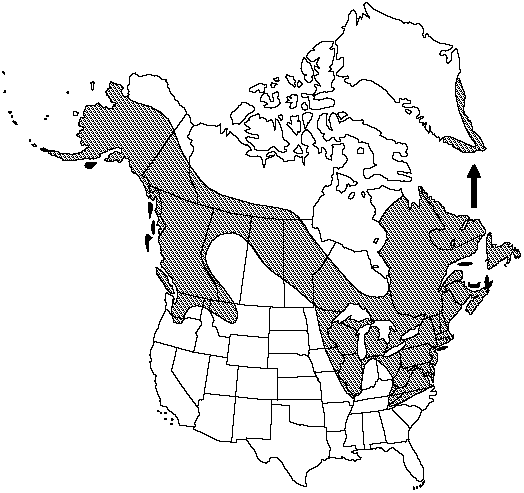Phegopteris connectilis
Canad. Naturalist & Quart. J. Sci. 3: 29. 1866.
Stems long-creeping, 1–2(–3) mm diam. Leaves monomorphic, dying back in winter, often 1–2 cm apart, 15–60 cm. Petiole straw-colored, (8–)15–36 cm × 1–3 mm, at base with scales brownish, lanceolate, glabrous or sparingly hairy on margin. Blade narrowly to broadly deltate, usually somewhat longer than broad, (6–)12–25 cm, proximal pinnae longest and slightly narrowed at base, spreading or reflexed. Pinnae deeply pinnatifid, (3–)6–12 × 1–3.3 cm, lowermost 1–2 pairs separate, sessile, more distal pairs strongly adnate and connected by narrow rachis wing; segments entire, or those of proximal pinna pair sometimes crenate, uncommonly shallowly lobed; proximal pair of veins from adjacent segments meeting margin above sinus, veins simple or sometimes forked in lowermost pinnae. Indument abaxially of moderately to densely set hairs 0.3–1 mm along costae, veins, and blade tissue, costae also with scales light tan to shiny brown, ovate-lanceolate, spreading, to ca. 3 mm, scales sometimes sparingly hairy on margin. Sori subterminal on veins. n = 2n = 90, apogamous.
Habitat: In moist, strongly to moderately acid soil, or on rocks in shaded rock crevices
Elevation: 0–2200 m
Distribution

Greenland, St. Pierre and Miquelon, Alta., B.C., Man., N.B., Nfld. and Labr. (Nfld.), N.W.T., N.S., Ont., P.E.I., Que., Sask., Yukon, Alaska, Conn., Del., Idaho, Ill., Ind., Iowa, Maine, Md., Mass., Mich., Minn., Mo., Mont., N.H., N.J., N.Y., N.C., Ohio, Oreg., Pa., R.I., Tenn., Vt., Va., Wash., W.Va., Wis., Eurasia.
Discussion
Selected References
None.